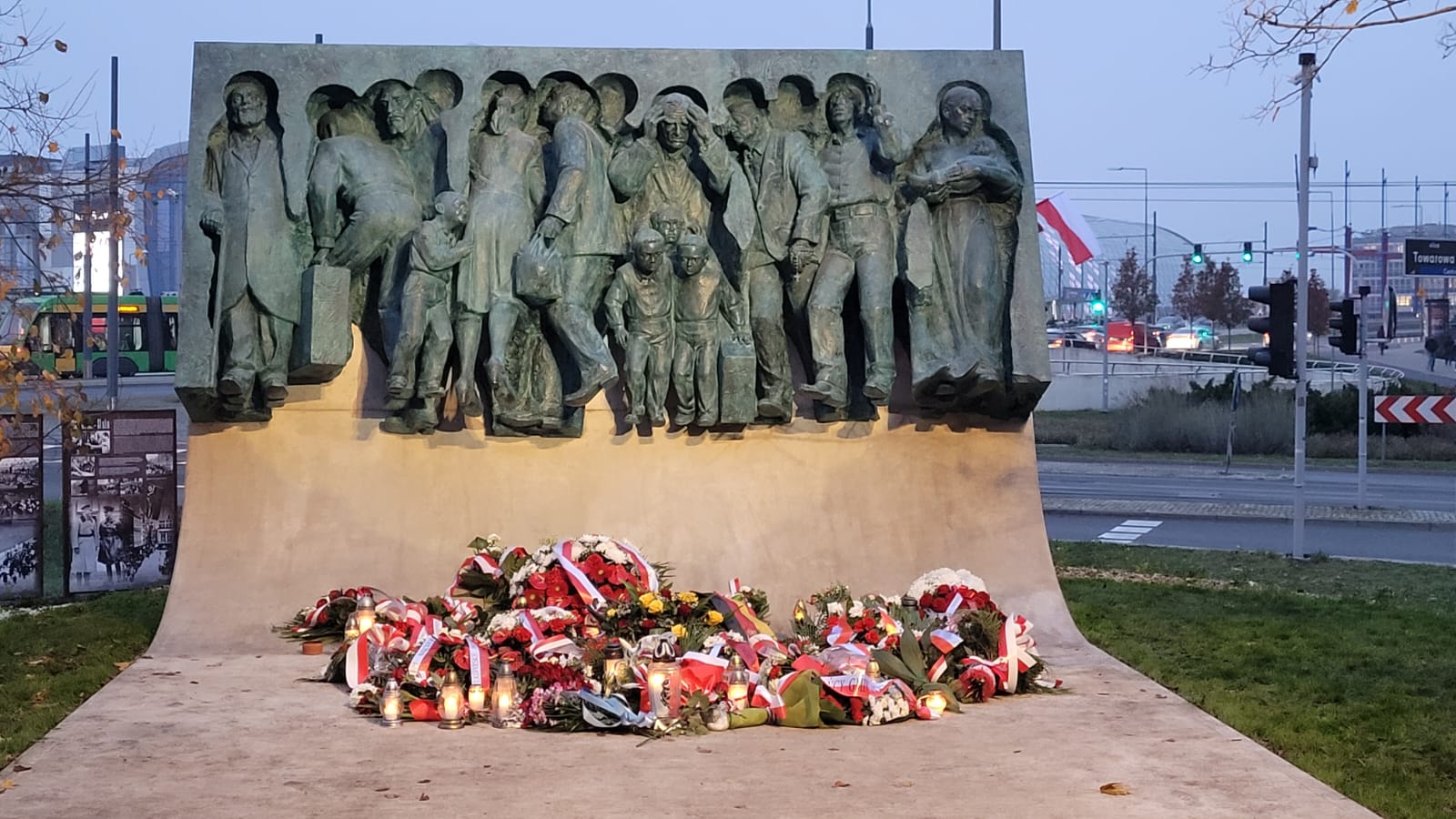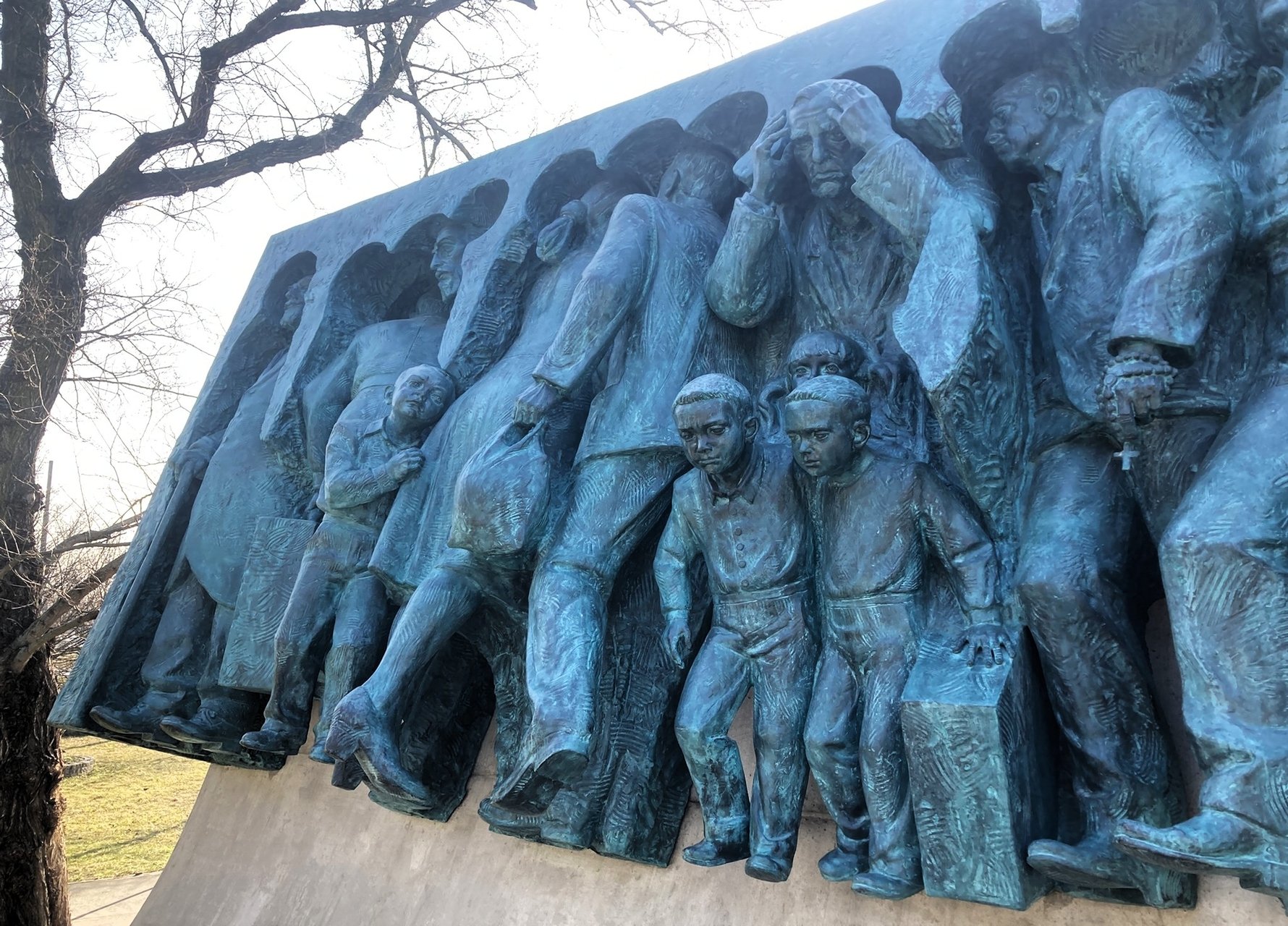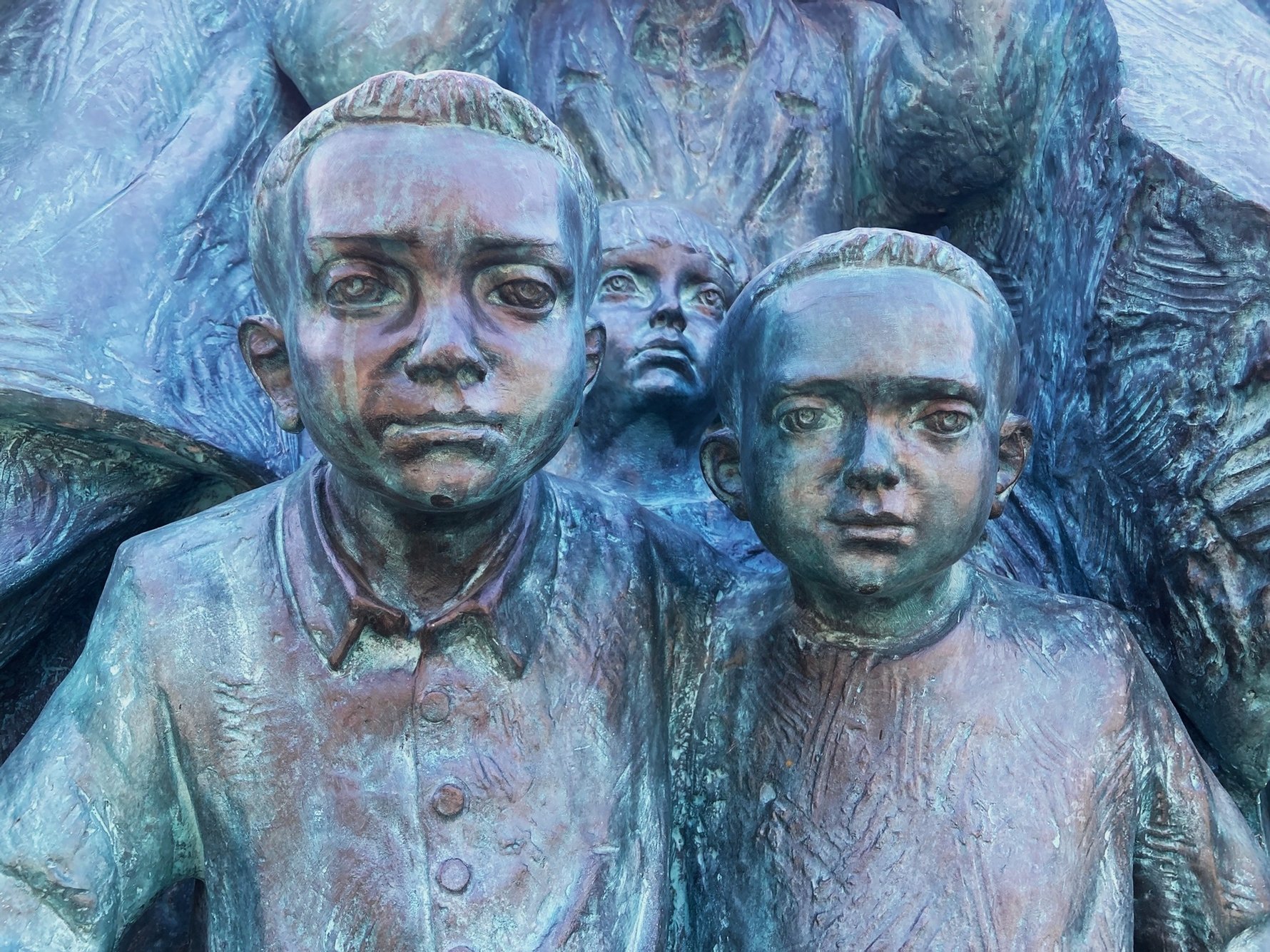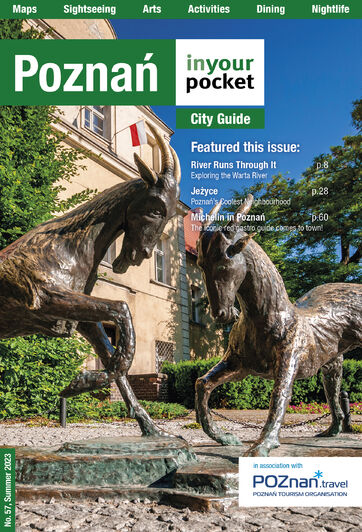This large, anguished monument commemorates the expulsion of some 630,000 Poles from Wielkopolska during World War II, 31% of which were children.

After the Nazi invasion, Poland’s territory was divided into three zones, roughly corresponding with the partitions of the late-18th century. Wielkopolska (including Poznań) was annexed outright and planned to be fully Germanised by deporting Poles and replacing them with ethnic Germans from the Baltics, Russia, Ukraine and Romania. Hundreds of thousands of families had their property confiscated and were sent on transports to the ‘General Government’ (former lands partitioned by the Austro-Hungarian Empire, including Kraków, now administrated separately by Germany) where they endured poverty, poor living conditions, food shortages, forced labour, and in many cases, further persecution. Many of those displaced ended up in ghettos, labour camps and concentration camps. For those who survived the Nazi terror, returning to Wielkopolska after the war often meant finding their homes occupied by others or destroyed altogether. The trauma of expulsion left lasting scars on families and communities, many of whom were never able to fully rebuild their lives.

Discussions over the moment took place for over a decade before it was finally unveiled on November 5, 2024 - the 85th anniversary of the first mass expulsions from Poznań during World War II. The monument is located at the intersection of Powstańców Wielkopolskich and Towarowa streets, on the edge of Karol Marcinkowski Park. This location was chosen for its symbolic proximity to the city's main train station, from which many expulsions began during World War II.

Designed by sculptor Karol Badyna, the monument takes the form of a bas-relief depicting people of various ages crowded together, symbolising the trauma of forced displacement.



Comments